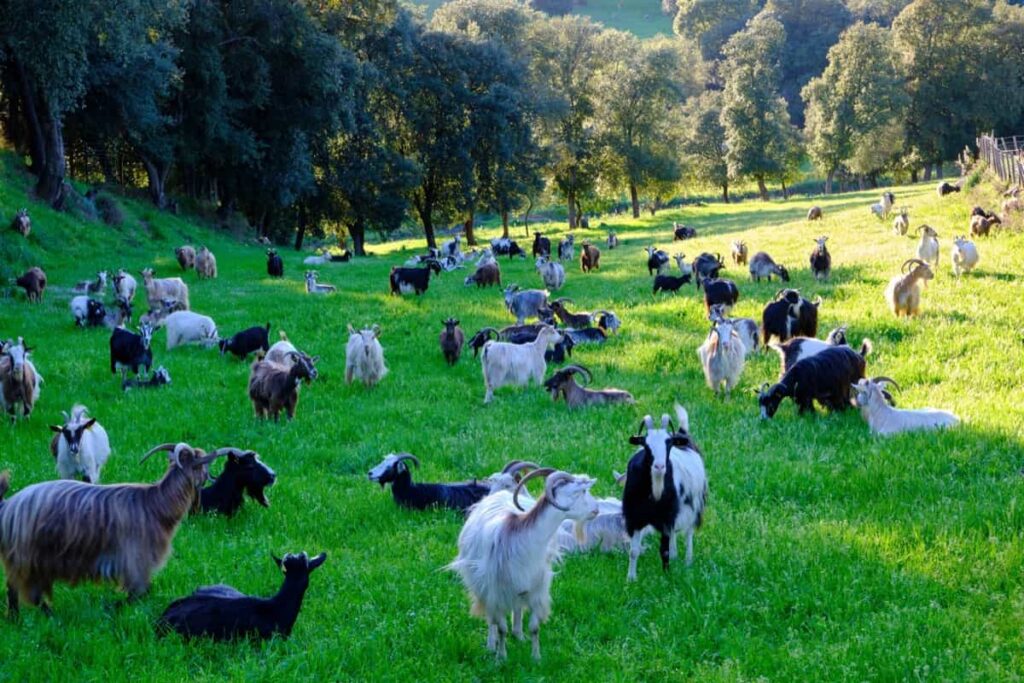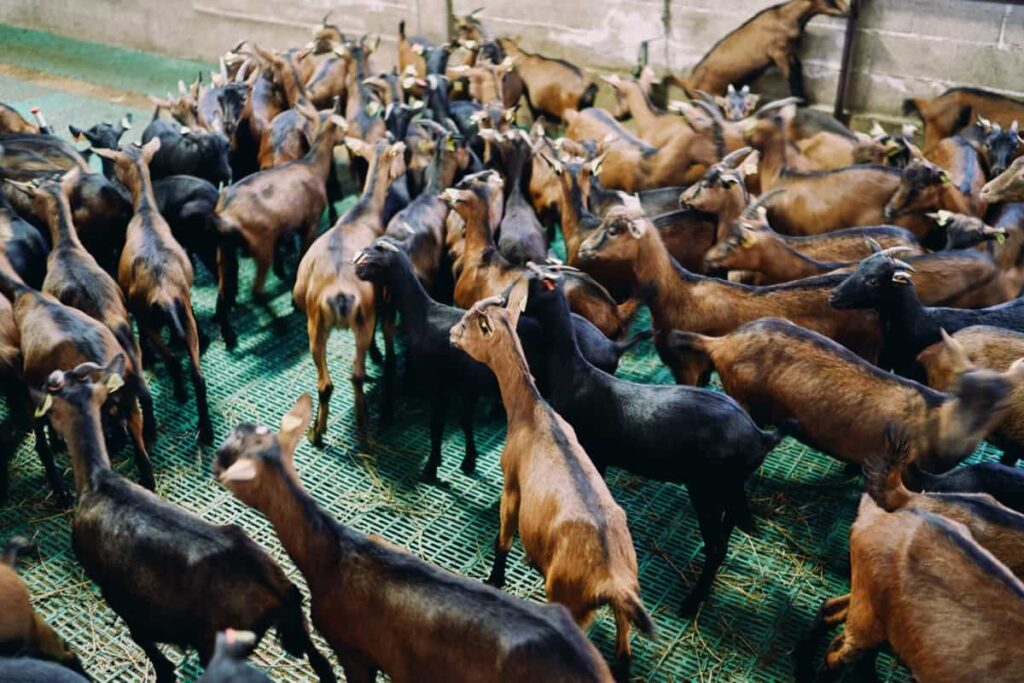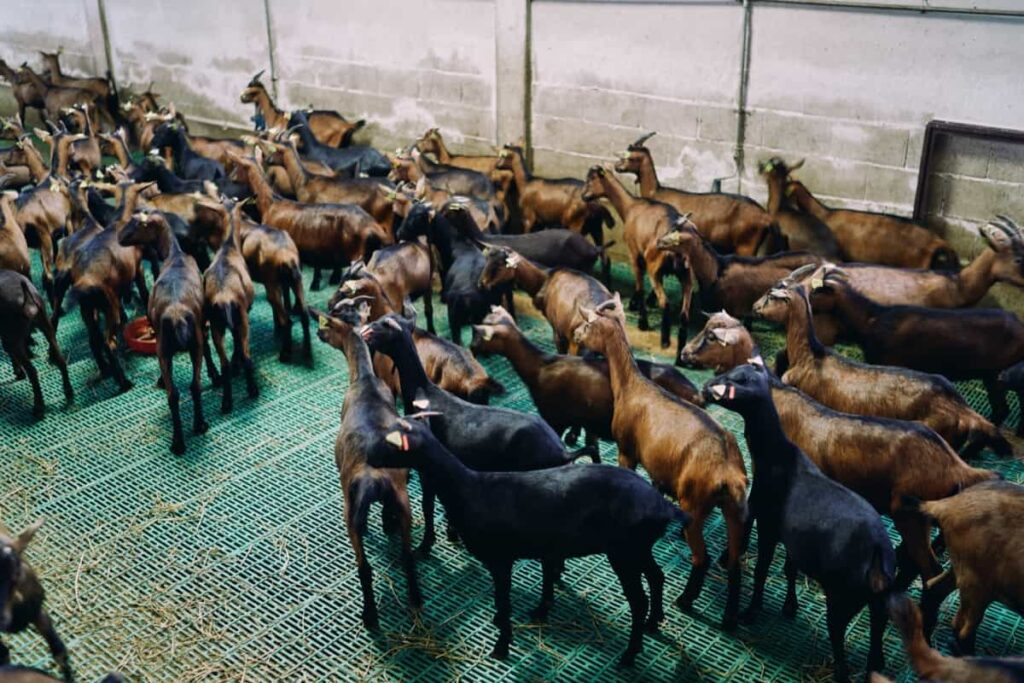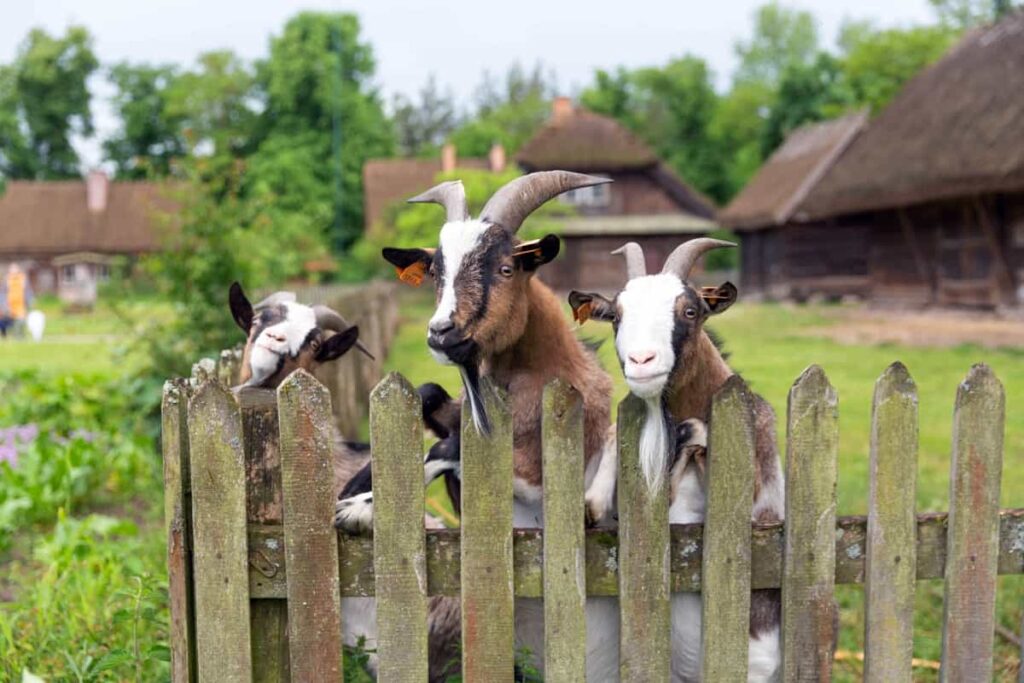Kerala’s goat farming industry is dynamic, features distinctive breeds, and benefits from government initiatives. This blog delves into the current scenario, the region’s distinctive goat breeds, and the government’s strategies to support and grow this vital agricultural sector.

Kerala Goat Farming
An Overview of the Industry’s Current Status
The goat-farming business in Kerala is an important part of the state’s agricultural income. It is made up of small, family-run farms that focus on meeting people’s needs for meat and cheese. There are problems in business right now, like needing more access to good feed and medical care, which lowers output. However, the area’s varied temperature means that different goat types can survive in a wide range of circumstances.
The government has programs to improve the quality of breeds and train farmers in order to encourage more environmentally friendly practices. Overall, goat farming in Kerala is changing. To meet growing demand and make sure the industry will be around for a long time, traditional methods are being mixed with new ones.
Different Breeds of Goats Found in Kerala and Their Characteristics
- Malabari Goats: Native to Kerala, they are known for high fertility and adaptability, with distinctive long ears and curled horns.
- Attappady Black Goats: Unique to Kerala’s Attappady region, they exhibit resilience to local diseases and are prized for their meat quality.
- Kottayam Dwarf Goats: Small-sized, efficient foragers and known for their friendly nature, these goats are well-suited for small-scale farming.
- Vechur Goats: Among the smallest breeds in India, they are renowned for their easy management and disease resistance, making them ideal for backyard farming.
- Kannur Dwarf Goats: Adapted to Kerala’s climate, they have a short stature, high fertility, and are primarily raised for meat.
- Chegu Goats: Though not indigenous, they are popular in Kerala for crossbreeding and enhancing milk and meat production due to their prolific nature.
Government Policies and Support for Goat Farming in Kerala
Conservation and Improvement of Malabari Goats
- Scheme Goals: The Kerala government-funded program aims to increase goat production by
- Establishing field performance recording areas for Malabari goats.
- Identifying and breeding superior female goats.
- Producing and recording the performance of male offspring.
- Selecting and partnering with agencies for breeding buck purchases.
- Enhancing Malabari goat quality and upgrading local breeds.
- Forming a Malabari Goat Breeders’ Association for sustained herd improvement.
In case you missed it: Best Plant Nurseries in Kerala: For Indoor, Outdoor Garden Wholesale Centers, and Online Delivery

Boer Goat Production
- Initiative: In 2001, under the National Buck Production Programme, selected Boer goats and bucks were imported from Australia.
- Objectives:
- Maintain a selective breeding program for Boer goats focusing on economic traits.
- Develop a nucleus stock of Boer goats for distribution to farmers.
- Conduct crossbreeding trials between Boer and Malabari goats.
- Undertake R&D on Boer buck semen freezing and AI, contributing to goat farming knowledge.
Financial Assistance and Incentives Provided by the Government
National Project for Bovine Breeding (NPBB)
- Collaboration: Government of India, NABARD, and local banks.
- Benefits: Loans and subsidies for buying goats and setting up farms.
- Subsidy Rate: 25% to 35% of goat purchase cost, varies by farmer category.
- Loan Duration: Up to 12 years.
Dairy Development Department Support
- For: Goat milk producers.
- Services: Forming milk cooperatives and providing equipment for milk processing.
Role of Kerala State Agricultural University in Developing and Improving Goat Farming Practices
Kerala State Agricultural University (KSAU) is very important for improving the way goats are farmed. By doing a lot of studies, KSAU came up with new ways to breed goats that make them more productive and less likely to get diseases. Their extension services give farmers important training and tools, with a focus on long-term farming methods that protect animals and the environment.
KSAU also works with local communities to make goat farming plans that fit the needs of the area. This helps rural families stay financially stable. Through these programs, KSAU makes a big difference in the growth and development of goat farming in Kerala, which sets an example for other places to follow. This diverse method not only improves local farming but also helps many small-scale farms make a living.
Challenges Faced by Goat Farmers in Kerala and How the Government is Addressing Them
Kerala goat farmers face many problems, such as needing more good feed, common diseases, and more medical care. These problems make it harder to be productive and make money. The rough landscape and changing weather in the state make raising goats even harder. There also needs to be more organized shops, which makes it hard for farmers to promote and sell their goods at fair prices.
In case you missed it: Kerala Organic Farming: For Vegetables, Herbs, Fruits, Millets, Crops, Livestock, and Aquaculture

The Kerala government has taken a number of steps to deal with these problems. They are making it easier for people to get good food and medical care, starting programs to stop diseases, and teaching people how to grow in a modern way. To make sure prices are fair, the government is also building better help and market links. The goal of these attempts is to make goat farming in Kerala more sustainable and profitable, which will help a lot of small farms make a living.
Impact of Climate Change on Goat Farming in Kerala and Adaptation Strategies
Climate change has a big effect on goat farming in Kerala, causing problems like heat stress and changes in how diseases spread. These changes put goats’ health and output at risk, which is important for many local businesses. Adaptation techniques are very important. For example, you can breed goats that can handle heat and make changes to their shelters to lower heat stress. Using methods to save water and a variety of food sources also makes animals more resistant to weather changes.
It is also important to create early-notice systems for disease breakouts and encourage sustainable feeding practices. With these steps, along with help from the government and education for farmers, Kerala’s goat farming can be protected from the side effects of climate change, ensuring long-term growth and security in this important agriculture sector.
Market Trends and Opportunities for Goat Farmers in Kerala
Goat farming is growing quickly in Kerala because more people want meat and milk. Local breeds that have adapted to Kerala’s environment require less care and are less likely to get diseases, which makes them a good choice for farmers. People are becoming more health conscious, and goat meat is better for you because it is smaller.
Also, the market for organic horse goods is growing, which means there are chances to charge more. Government funding and programs are encouraging sustainable farming, which is causing the industry to expand even more. It’s also becoming easier to sell goods abroad, especially in the Middle East, where goat meat is in high demand. Overall, Kerala’s goat farming industry is full of chances for growth, new ideas, and for farmers to make more money.
Collaboration between Farmers, Government, and Private Sector to Boost Goat Farming in Kerala
Goat farming in Kerala is a lucrative and sustainable business opportunity. Still, challenges such as lack of access to quality breeds, feed, veterinary services, markets, credit, and insurance hinder farmers’ growth. To overcome these obstacles, collaboration between farmers, the government, and the private sector is crucial. Farmers need to be empowered with knowledge, skills, and resources to improve productivity and profitability. The government can provide subsidies, incentives, loans, insurance, and extension services, while the private sector can offer innovative solutions and opportunities.
The private sector can partner with farmers to supply quality breeds, feed, medicines, equipment, and technology, create value-added products, tap into new markets, and provide financial services like microfinance, leasing, and insurance. By working together, these collaborations can enhance the quality and quantity of goat products, increase the income and livelihood of farmers, and contribute to food security and economic development in Kerala.
In case you missed it: 15 Best Pet Goat Breeds: The Friendliest Goat Breeds Perfect for Pets and Farms

Frequently Asked Questions (FAQ) on Kerala Goat Farming
Is There International Demand for Goats and Goat Products from Kerala?
Yes, there is a growing international market for Kerala’s goat meat and dairy products due to their quality and organic farming practices.
What Are the Marketing Strategies for Goat Products in Kerala?
Strategies include direct selling, cooperative societies, and leveraging online platforms for broader market reach.
Conclusion
Government policies and a variety of breeds are supporting Maharashtra’s thriving goat farming industry. With initiatives promoting sustainable practices and financial aid, the sector is poised for growth, benefiting rural economies and ensuring a sustainable future for agriculture in the state.
- Profitable Village Farming Business Ideas in 2024
- High-Yield Aquaculture: Fast-Growing Fish for Farming
- Effective Fish Pond Construction Techniques for Beginners
- Irrigation and Water Management in Pineapple Farming
- Blossom to Harvest: Mastering Flowering and Pollination in Papaya Farming
- Pig Fattening Essentials: From Selection to Sale for Beginners
- Raising Wagyu Cattle: A Complete Guide for Premium Beef Production
- Soil Types and Their Water Holding Capacity
- Optimizing Irrigation Schedules for Coconut Groves for Enhanced Yield
